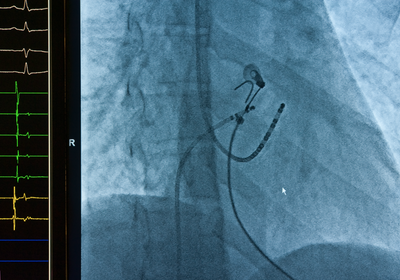Implantable cardiac monitors allow for continuous heart monitoring and are a major advancement in detecting arrhythmias. These miniature devices are implanted just under the skin in a minimally invasive outpatient procedure. They can detect and record arrhythmias continuously for up to three years, allowing for the detection and diagnosis of conditions that may not show up during standard office-based ECG or Holter monitoring tests. The data is wirelessly transmitted to a secure database where it can be monitored remotely by physicians. This provides a significant advantage over external looping monitors by allowing for detection of infrequent arrhythmias.
The Global Implantable Cardiac Monitors Market is estimated to be valued at US$ 1.1 Bn in 2024 and is expected to exhibit a CAGR of 5.1% over the forecast period 2024-2031. Growing preference for long-term continuous ECG monitoring drives the adoption of implantable cardiac monitors. Remote monitoring capabilities allow physicians to track patients continuously without repeat clinic visits, improving arrhythmia diagnosis.
Key Takeaways
Key players operating in the Implantable Cardiac Monitors are Medtronic, Abbott, BioTelemetry, Boston Scientific Corporation, Biotronik SE & Co. KG. Medtronic enjoys leading market share with its Reveal LINQ and Confirm Rx systems.
The rising geriatric population and increasing prevalence of arrhythmias is driving significant demand for implantable cardiac monitors. Growing focus on reducing hospital visits through remote monitoring solutions supports their adoption.
Major players are focusing on expanding their geographic footprint in emerging markets of Asia Pacific and Latin America. Partnerships with healthcare providers help proliferate access to these advanced monitoring solutions globally.
Market Key Trends
Remote patient monitoring using implantable cardiac monitors is a rapidly growing trend. Analyzing arrhythmia data remotely saves costs by reducing unnecessary clinic visits. It allows for early intervention and preventive care through continuous monitoring. This trend is accelerating with the proliferation of digital health technologies during the COVID-19 pandemic.
Porter’s Analysis
Threat of new entrants: Low cost of manufacturing and presence of large pools of untapped customers especially in developing nations may attract new players in the long run.
Bargaining power of buyers: Varied product offerings and need for lifelong medical care increases customer dependence on existing market leaders reducing their bargaining power.
Bargaining power of suppliers: Suppliers of complex components have some control over pricing but established design expertise and scale of top players ensures there is no exploitative pricing by input providers.
Threat of new substitutes: Emerging remote monitoring technologies pose a potential threat but implantable devices have established clinical advantages in arrhythmia management reducing short term risk of substitution.
Competitive rivalry: Top three players account for over 70% share indicating high concentration with Medtronic and Abbott the clear leaders pursuing continuous innovation to consolidate their positions.
Geographical Regions
Currently, North America holds the major share of the global implantable cardiac monitors market benefiting from supportive reimbursement structure and advanced healthcare facilities in the region.
The Asia Pacific region is expected to witness the fastest growth over the forecast period supported by rising geriatric population, improving accessibility and increasing healthcare investments of developing economies in the region.
*Note:
1. Source: Coherent Market Insights, Public sources, Desk research
2. We have leveraged AI tools to mine information and compile it

